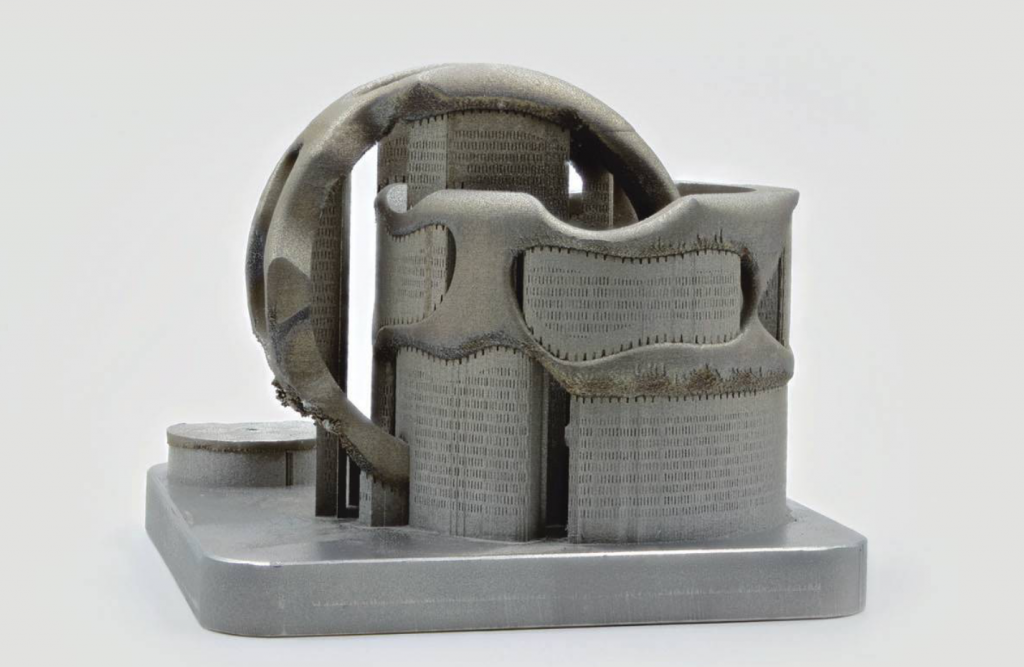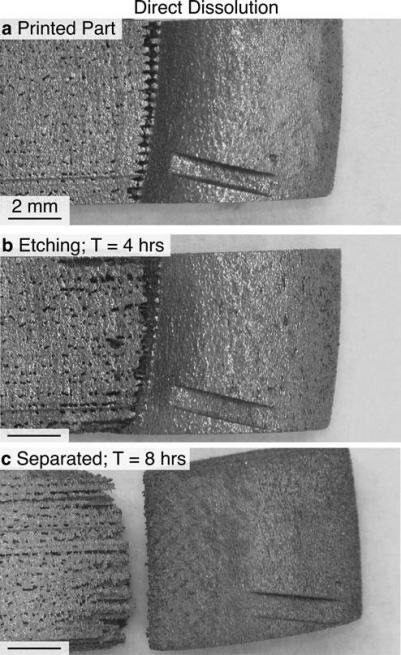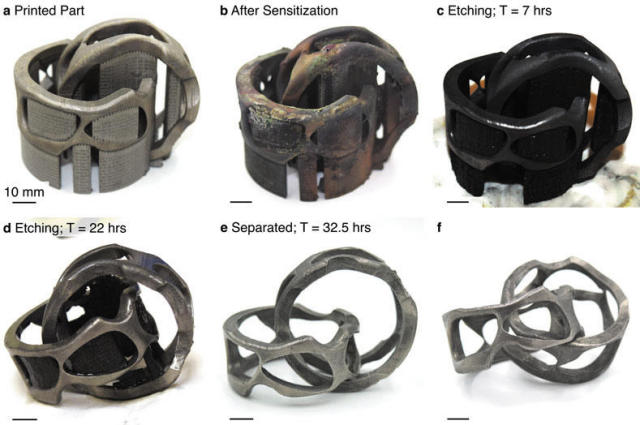Researchers at Pennsylvania State University and Arizona State University have published an article demonstrating the possibility of dissolving support material of 3D printed metal parts. Focusing on the Powder Bed Fusion (PBF) method of 3D printing with granulated metal, the technique significantly reduces the time and effort spent in removing excess material.

From days to hours
As estimated in the Next Generation Additive Manufacturing project, post processing currently constitutes around 70% of the overall cost to make 3D printed parts. For parts produced in the Penn State/Arizona study, researchers also calculate that it takes on average 4–5 days to machine the 3D prints, at a rate of $30 – $100 per hour. Post processing then is a crucial area for improvement in 3D printing, especially when it comes to such robust materials as stainless steel.
By taking an electrochemical approach to the finishing of 3D printed metal parts, this study reduces support removal to just 32.5 hours. In addition, the treatment can be left largely unattended as it is a self-terminating process in which parts stand inside baths.
How does it work?
To start, researchers tested the concept by 3D printing a stainless steel component without any extra treatment. The parts were submerged in a chemical mixture of nitric acid, hydrochloric acid and deionized water. Though the mixture successfully dissolved the 3D printed supports, the process required manual input to stop the acid from dissolving too much of the metal, making it hard to retain the required shape.

To improve upon this process, a sensitizing agent was added into the heat-treatment (annealing) stage of metal manufacturing. This agent makes the top 100–200 microns (μm) of the component’s surface more sensitive to the chemicals used. Conditions of the electrochemical bath are then modified to operate in favour of the sensitivity, making the process self-terminating.

Conclusions
In conclusion the authors state,
…we demonstrate, for the first time, that support structures in PBF-printed materials can be selectively removed using novel approaches […] This electro- chemical process will drastically reduce the complexity, costs, and time associated with support removal by replacing laborious machining and grinding operations with a simple sensitization and etching processes.
The full article Dissolvable Supports in Powder Bed Fusion-Printed Stainless Steel can be accessed online in the 3D Printing and Additive Manufacturing journal, Volume 4, Number 1, 2017. Contributing authors are listed as Christopher S. Lefky, Brian Zucker, David Wright, Abdalla R. Nassar, Timothy W. Simpson and Owen J. Hildreth.
For more of the latest news about 3D printed metal sign up to the 3D Printing Industry newsletter, and follow our active social media sites.
Don’t forget to vote in the first annual 3D Printing Industry Awards.
Tickets for the 3D Printing Industry Awards are also now available here.
Featured image shows interlocking steel loops after supports have been dissolved. Photo via 3D Printing and Additive Manufacturing journal Volume 4, Number 1, 2017


